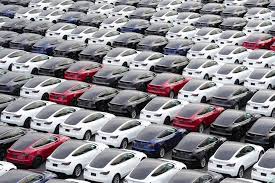As U.S. consumers hit the road this summer, the state of electric vehicles (EVs) is at a critical juncture, with the payments industry addressing key issues to support growth.
Electric Vehicle Sales Update
Major automakers have reported mixed results for their second-quarter 2024 EV sales, with notable successes. Ford’s EV sales surged 61% year-over-year in Q2, with 23,957 units sold. The F-150 Lightning saw a 77% increase, while sales of the Mustang Mach-E and E-Transit grew by 46% and 96%, respectively. In the first half of 2024, Ford sold 44,180 EVs, marking a 72% increase from last year. Ford’s CEO, Jim Farley, highlighted the company’s focus on introducing smaller, more affordable EVs to compete globally.
Tesla delivered 443,956 EVs globally in Q2, surpassing Wall Street’s estimate of 439,302. However, this represented a 4.8% year-over-year decline, following an 8.5% decline in Q1. Tesla’s production decreased by 14% to 410,831 units due to a factory shutdown in Germany and shipment disruptions. Tesla aims to focus on affordable cars and its energy storage segment for future growth.
GM reported selling 21,930 EVs in Q2 2024, a 40% increase from the same period in 2023, driven by the Cadillac Lyriq and Chevrolet Blazer EVs. GM’s EV sales in the first half of 2024 reached 38,355, up 6% from 36,322 units in the first half of 2023. All EVs sold this year utilize GM’s new Ultium propulsion system. GM plans to reintroduce the Bolt with Ultium technology in 2025.
Payment Issues
Consumer apprehension about EVs often stems from access to charging stations and the ability to pay for charging services. A JD Power report in May highlighted concerns about affordable vehicles, charging availability, and a lack of knowledge regarding EV ownership and incentives. Stewart Stropp, executive director of EV intelligence at J.D. Power, pointed out these barriers to mass consumer adoption.
Various payment companies have addressed the payment challenges at EV charging stations. For instance, Visa recommends installing Visa-accepting terminals and offering contactless payment options to enhance customer experience. Visa suggests digital payment solutions, such as mobile app payments, complemented with tap-to-pay options for accessibility. Using the correct merchant code (MCC 5552) is crucial for bank rewards and reducing service issues.
A recent U.S. Department of Energy report on best practices for payment systems at public EV charging stations addresses significant challenges in payment processes. Key issues include network connection reliability, hardware robustness, and payment system integration. The report emphasizes the necessity of strong network connections, durable card readers, and regular maintenance to ensure functionality. It also highlights the need for standardized user interfaces to reduce customer confusion and improve user experience.
The report states, “Failure to accept and process payment is a cause of public electric vehicle (EV) charging session failures,” underscoring the importance of reliable payment solutions to avoid service disruptions.
Original Story at www.pymnts.com
